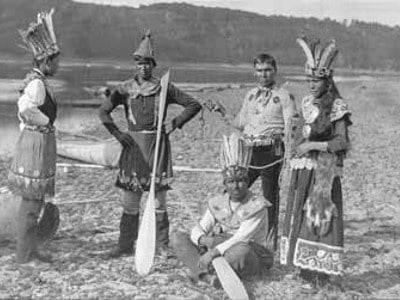

A road crew in New Brunswick near Fredericton have discovered what archaeologists have determined to be an ancient campsite, complete with over 600 artifacts and dating from more than 12,000 years ago.
The crew first noticed the ruins two years ago while working on a bypass to Highway 8 that runs north from Fredericton up to Miramichi and Bathurst.
Ancient campsite in New Brunswick dates back 12,000 years…
“It’s very, very rare to find a campfire from 12,000 years ago, intact like this,” said Brent Suttie, the provincial archaeologist and team lead of 22 technicians working at site. The campsite is thought to have been made at the edge of a glacier lake formed at the end of the last ice age over 12,000 years ago. So far, workers have uncovered a fully intact fire pit with ancient charcoal, arrowheads and a stone tool for cleaning animal hides.
Some Indigenous members of the archaeological team are feeling a special connection to the site, such as Tyson Wood from St. Mary’s First Nation who grew up not far from the location and Shawna Goodall from Tobique First Nation near the Maine border. “It’s such an amazing feeling to have that connection,” said Goodall. “These are my ancestors. And just to be able to be the first one to hold things in 13,000 years — I get goosebumps every time,” says Goodall.
Provincial Transportation Minister Bill Fraser has stated that the site is “very important to the people of New Brunswick” and has promised that the site will be protected.
Archaeologists have found that with the melting of the glaciers which covered much of Canada during the period between 17,000 and 50,000 years ago, people started migrating south from Alaska, where they had crossed the Bering land bridge some 20,000 years ago, and quickly moved across North America to reach the Atlantic coast of what is now Canada and the United States.
Over on the West coast, evidence of 13,000 year old footprints and campfire remnants were discovered last year on Calvert Island off the Central Coast region of British Columbia about 100 kilometres north of Vancouver Island. The footprints were judged to have been likely made by a man, woman and child.
“We figure that at some point people were hanging out around this fire,” said archaeologist Duncan McLaren who radiocarbon dated the findings. “They left their footprints in the grey clay and then they were subsequently filled by this black sand, which essentially preserved the footprints.” McLaren says that the oldest human footprints in the Americas have been dated to 14,500 years ago at a site in Monte Verde, Chile.
Last year, New Brunswick archaeologists recovered hundreds of artifacts from the site of the proposed Sisson Brook mine, an open pit tungsten and molybdenum mine and ore processing facility set to the northwest of Fredericton. The findings are thought to be dated between 7,000 and 8,500 years ago from the middle archaic period. The site is located on land traditionally known to be of the Maliseet Indigenous peoples, said to never have been surrendered to European settlers.
Leave a Reply
You must be logged in to post a comment.




 Share
Share Tweet
Tweet Share
Share




Comment